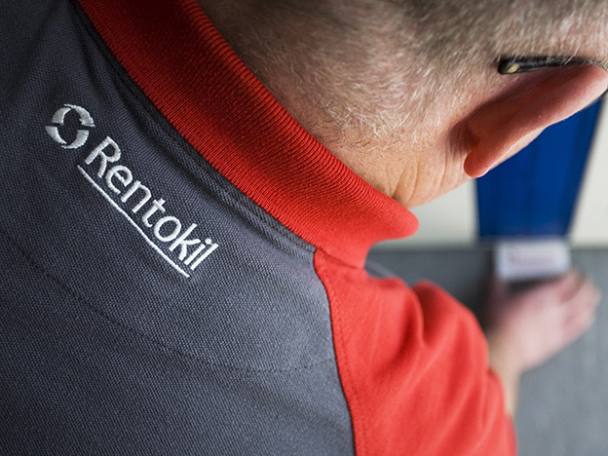Rentokil Initial’s financial trajectory has been markedly amplified by the strategic acquisition of Terminix, the US pest control rival. The combined entity delivered a 70% year-on-year rise in revenue to £2.67 billion, while adjusted operating profit climbed 88% to £437 million. The magnitude of the deal — Rentokil’s $5.4 billion expenditure on Terminix — makes it a substantial cornerstone of the group’s current performance, complicating efforts to separate the strength of the underlying business from the additive impact of the acquisition. Yet, the early indicators are encouraging. Organic revenue growth stood at 5.4%, underscoring growth across all regions and reflecting resilient demand alongside continued effective pricing strategies.
Deal size, integration scope, and core metrics
The Terminix acquisition has redefined Rentokil Initial’s scale and market reach in a way that is likely to influence profitability, cash flow, and strategic options for years to come. In the near term, the revenue surge is largely explained by the inclusion of Terminix’s operations, which broadens Rentokil’s customer base, service line diversification, and geographic exposure, especially within the large and competitive US market. The reported 70% uplift in revenue confirms that the top line has been pulled higher by the acquisition, but it also raises important questions about margins, mix, and incremental costs associated with integrating two sizable organizations with different operating rhythms and cost structures. The 88% rise in adjusted operating profit signals a strong initial translation of the deal into profitability, suggesting that the combined platform is achieving synergies or operating leverage that offset, at least in part, the upfront investment and integration expenses associated with a high-value purchase of this scope.
From a financial perspective, the headline figures provide a clear impression of scale and momentum. Revenue expansion due to the Terminix contribution is evidently the dominant force shaping period-over-period comparisons. When evaluating the health of the core business aside from the acquisition, investors and analysts will closely examine the rate and sustainability of organic growth, together with the trajectory of margins as the integration progresses. Organic revenue growth of 5.4% indicates that, beyond the acquisition effect, there remains solid demand for Rentokil’s services, driven by the market’s underlying need for pest control, hygiene services, and related offerings. This level of organic growth across all regions points to a broad-based demand environment rather than a temporary uplift linked to a single market or customer segment.
The takeaway from the initial results is nuanced. On one hand, the acquisition has delivered immediate scale and a positive impact on profitability, reinforcing Rentokil Initial’s strategy to push for global leadership in its space. On the other hand, the degree to which margins can be maintained or improved as the integration matures will hinge on successful cost optimization, price realization, cross-selling opportunities, and the management of any integration-related costs that arise as Terminix’s operations are folded into Rentokil’s wider platform. The balance between payer-driven price resilience and the competitive dynamics of pest control markets will come under closer scrutiny as the post-merger period unfolds.
Growth drivers and regional performance
A key feature of the results is the explicit acknowledgment of growth across all regions. This broad-based organic growth signals that the combined group is benefiting from a diversified geographic footprint, which can help mitigate regional slowdowns and soften cyclicality in any single market. The resilience of underlying demand, coupled with continued discipline around pricing strategies, appears to be supporting revenue growth beyond the immediate uplift from Terminix’s integration. In practice, this means Rentokil Initial is not solely riding the coattails of a large acquisition; it is also capitalizing on a durable market backdrop where customers value comprehensive pest control and hygiene services.
Pricing power emerges as a central theme in sustaining growth. In many service-oriented sectors, price realization is a critical lever to convert volume gains into margin expansion. The combination of Terminix’s customer base and Rentokil’s pricing capabilities could position the group to pursue stronger price realization without eroding demand. If management can maintain or improve gross margins while absorbing integration costs, the long-term profitability story could be further reinforced. The regional mix of growth also matters. Some regions may experience more pronounced benefits from cross-selling and service optimization, while others contribute steady, recurring revenue streams that stabilize cash flow.
In addition to organic growth, the interplay between Terminix’s U.S. market presence and Rentokil’s international footprint creates opportunities for operational synergies. For example, cross-border procurement efficiencies, standardized service platforms, and shared best practices in field operations can reduce unit costs and enhance service delivery. The cross-pollination of sales channels and client relationships could unlock incremental revenue opportunities across the combined client base. However, realizing these benefits requires careful change management, clear governance, and a disciplined approach to integration timelines so that the business can scale without significant disruption to day-to-day operations.
Integrations, synergies, and execution risks
Integration of a major acquisition always carries a spectrum of opportunities and risks. On the positive side, Terminix brings an extensive US footprint, a complementary service mix, and a large base of commercial and residential customers, all of which can be leveraged to sharpen Rentokil’s service offerings and improve client retention. The potential for cost synergies exists in several layers: consolidated purchasing power, streamlined back-office functions, unified technology platforms, and standardized training and safety programs across the combined workforce. In principle, these synergies can translate into improved operating efficiency and stronger margins over time, provided that integration is managed with discipline and a clear roadmap for achieving the targeted benefits.
Cross-selling opportunities also loom large. Rentokil’s global reach can help expose Terminix’s customers to a broader suite of services and geographic capabilities, which could stabilize revenue growth and deepen customer relationships. Conversely, Terminix’s U.S. capabilities could extend Rentokil’s brand and service portfolio in new markets where the company previously had limited exposure. The net effect could be a more resilient revenue base and a more compelling value proposition for corporate and commercial clients who require integrated pest control and hygiene solutions across multiple sites and regions.
Nevertheless, the risks associated with such a large integration should not be underestimated. Cultural alignment between two large organizations with distinct operating cultures can be challenging. Differences in procurement practices, field service delivery, and customer relationship management may slow the pace of integration if not addressed with deliberate change management. There are potential transitional costs from system migrations, process realignments, and the integration of workforce structures. The timing and phasing of integration initiatives will be crucial to minimize disruption to ongoing service levels, ensure continuity for customers, and preserve the trust of employees during the transition.
Strategic execution will also be tested by competitive dynamics and regulatory considerations in the pest control and hygiene services sectors. Market participants will be watching for how Rentokil manages pricing discipline while preserving customer satisfaction and service quality. At the same time, regulatory frameworks across different jurisdictions can shape the cost and speed of integration, influencing capital allocation decisions and the ability to realize planned synergies. The balance between immediate absorption of Terminix’s operations and the long-term goal of building a unified, scalable platform will define the trajectory of Rentokil Initial’s post-merger performance.
Financial health, margins, and capital allocation
From a financial health perspective, the initial metrics indicate a favorable translation of the acquisition into revenue growth and profitability. The 70% revenue increase is a clear signal of scale, while the 88% rise in adjusted operating profit demonstrates that the group is achieving meaningful profitability improvements alongside top-line expansion. The key question for stakeholders is how sustainable these gains will prove over successive financial cycles as the integration progresses and the company absorbs the costs associated with bringing two large organizations together.
Margin dynamics will be central to this analysis. If organic growth remains robust, and the group successfully leverages cost synergies and cross-selling opportunities, there is potential for margin expansion beyond the near term. However, the combination of integration expenses, potential higher initial operating costs in the transition period, and any disruption during the early stages of the Terminix integration may dampen margin progression temporarily. Investors will be keen to see how gross margins and operating margins trend as the post-merger integration matures, and how the company manages its working capital and capital expenditure to sustain free cash flow generation.
Capital allocation decisions will also come under scrutiny. The scale of the deal implies a significant outflow of funds at the outset, followed by a focus on deleveraging, service quality, and growth investments. How Rentokil prioritizes investments in technology platforms, fleet modernization, workforce training, and service innovations will shape the durability of the company’s competitive advantage. In addition, management’s communication around synergy realization timelines, milestone-based targets, and credible roadmaps for achieving efficiency gains will influence market expectations and the long-term confidence of investors.
Market positioning and competitive landscape
The market for pest control and hygiene services is characteristically fragmented, with regional players complementing global operators. Rentokil Initial’s enlarged footprint post-Terminix acquisition signals an intent to compete aggressively across both mature markets and high-growth regions. The combination of a strong US platform with a diversified international network could yield a compelling value proposition for customers seeking consistent service standards and integrated solutions across multiple sites and geographies. In this context, Rentokil’s ability to differentiate through service quality, rapid response times, and proactive risk management will be a critical driver of client retention and new business development.
Competitive dynamics in pest control are influenced by the need for compliance with health and safety regulations, environmental considerations, and the ongoing demand for effective disease prevention measures. Rentokil’s broader service portfolio, including hygiene and facility services, may offer a more comprehensive approach to facility management than many single-solution competitors. This expanded capability could strengthen client relationships and reduce churn, particularly among large corporate accounts that value a single trusted partner for multiple facility needs. The integration with Terminix could also create a more formidable entry in markets where scale is a decisive factor, potentially raising the barrier to entry for smaller peers and reinforcing the strategic moat around the combined business.
However, competition remains intense, and execution risk persists as an ever-present factor. The group will need to translate scale into superior service delivery, cost efficiency, and innovation in a way that is palpable to customers and measurable to investors. The path to sustained competitive advantage lies in continuing to invest in frontline capabilities, data-driven service optimization, and a customer-centric approach that preserves trust and reliability in every market where the company operates.
Regional and product mix insights
Dissecting the regional impact provides a more granular view of how the post-merger entity is performing. The organic growth of 5.4% across all regions suggests a balanced and universal demand for Rentokil’s services, rather than a concentration of growth in a single geography. This balance is important because it can offset regional downturns and reduce exposure to localized market shifts. A deeper look at regional performance would help determine if certain markets are contributing disproportionately to the organic growth or if there are regions where pricing strategies and service mix are delivering outsized value.
The product and service mix also matter for long-term profitability. Pest control, environmental hygiene, and related services each bring different margin profiles and capital requirements. The Terminix acquisition could enable a more favorable mix if higher-margin services or higher-value contracts are cross-sold to Terminix’s customer base, or if shared platforms enable more efficient service delivery across categories. The challenge is to maintain quality and consistency across a broader service catalog while controlling the associated costs and complexity. A careful, phased approach to cross-disciplinary offerings will be essential to avoid service fragmentation or customer confusion.
Regulation, risk management, and governance
Regulatory considerations are a constant reality in the pest control and hygiene service sector. Compliance with environmental, health, and safety standards across diverse jurisdictions can shape operational practices and cost structures. Rentokil Initial’s integration with Terminix will require careful alignment with local regulatory requirements, which may influence everything from pesticide usage protocols to data privacy in customer operations. Effective governance and risk management will be key to sustaining the integrity and reliability of service delivery during the integration process.
Additionally, governance structures need to be robust enough to handle the complexities of merging two large organizations. Clear accountability, well-defined decision-making processes, and transparent performance tracking are essential for maintaining stakeholder confidence and ensuring that synergy targets are realized in a disciplined manner. The management team will need to communicate progress, challenges, and milestones transparently to investors, employees, and customers to maintain trust and continuity of service.
Strategic implications for stakeholders
For shareholders, the headline numbers underscore a thesis of accelerated growth through scale and geographic diversification. The market will be assessing not only the immediate impact of the Terminix acquisition on revenue and profit, but also the durability of organic growth and the consistency of execution as integration progresses. The degree to which the combined entity can sustain improved margins, optimize operations, and deliver cross-selling opportunities will influence long-term valuation and return prospects.
From an operational perspective, Rentokil Initial must maintain a relentless focus on service quality, customer satisfaction, and workforce stability. Retaining key talent and ensuring smooth day-to-day operations during the integration window will be critical to preserving client trust and sustaining revenue growth. The success of the post-merger phase will largely hinge on how effectively the group can integrate systems, align processes, and operationalize cross-regional capabilities without compromising service delivery.
For customers, the merger promises a broader, more integrated suite of pest control and hygiene solutions, backed by an enlarged footprint and enhanced response capabilities. If execution is seamless, clients may experience improved service efficiency, faster response times, and a more comprehensive service offering across multiple sites and regions. However, any disruption during the transition would need to be carefully managed to protect customer relationships and uphold service continuity.
Long-term outlook and core takeaways
In the near term, Rentokil Initial’s results reflect a combination of acquisition-driven growth and legitimate organic momentum. The 70% revenue uplift and 88% profit uplift demonstrate the potential value of strategic scale when coupled with disciplined operational execution and robust pricing power. The organic growth figure of 5.4% across all regions is a positive signal that the core business remains healthy even as a substantial merger activity unfolds. The real test, however, will be how effectively the company converts integration milestones into sustainable margin expansion and whether cross-selling opportunities translate into durable revenue streams.
The outlook for Rentokil Initial will depend on several interrelated factors: the pace and success of Terminix integration, the management of integration costs, the ability to maintain or improve pricing discipline, and the ongoing strength of demand for pest control and hygiene services globally. If the company can navigate these dynamics, the combination could position Rentokil Initial as a leader in its sector with a broadened portfolio, a stronger market position, and improved scale economics that support long-term value creation for shareholders and customers alike.
Conclusion
Rentokil Initial’s performance after acquiring Terminix signals a transformative step for the company, characterized by substantial revenue growth, strong profitability, and a broadened geographic footprint. While the acquisition scale complicates assessments of the underlying business’s standalone strength, the reported organic growth and early profitability gains indicate meaningful synergy potential and a robust demand backdrop across regions. The key going forward will be the disciplined execution of integration plans, the realization of cross-selling opportunities, and the maintenance of pricing power that sustains margins. If management can navigate these dynamics, the enlarged platform could solidify Rentokil Initial’s position as a global leader in pest control and hygiene services, delivering durable value to customers and investors while continuing to emphasize service quality, safety, and operational excellence.



